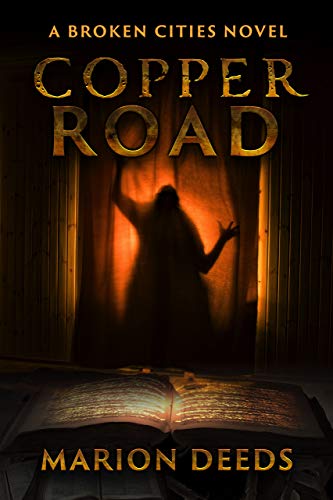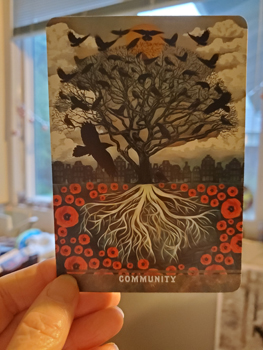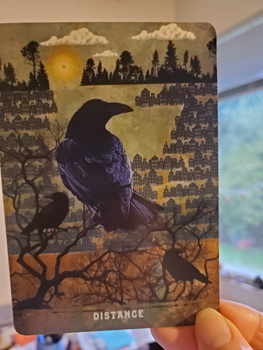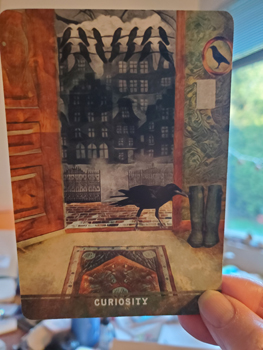White terrorism is as American as apple pie.
Apple pie is an icon of the USA. So is white terrorism.
I’m white, I’m in my sixties, I’m female. I was raised solidly lower middle class. (A middle class still existed when I was growing up.)
I faced sexism. I watched white males be favored over me, or other more qualified women (although the last few decades of my career, that dwindled dramatically). What I took away from that, for years, was that I understood about the -isms: sexism and, by extension, racism. It is only in the last ten years that I started to realize I had truly no idea. I was always second in line behind the white male, yes… but I was on the “good” side of the velvet rope of White Privilege and that velvet rope, most of my life, was invisible to me.
I never learned in school, for instance, about the consistent, persistent presence of white terrorism waged against Black Americans, except for lynchings. I thought most acts of violence against Black people were carried out by “lone wolves” or groups like the Ku Klux Klan, which, again I thought (wrongly) was mostly southern and mostly gone. I didn’t read about the Greenwood neighborhood massacre in Tulsa Oklahoma until the 2010s. Seriously. I knew “something bad” had happened in a town called Rosewood, Florida, because John Singleton made a film about it, but I thought Rosewood was a horrifying one-off.
On January 6, 2021, domestic white terrorists committed an act of insurrection and invaded the Capitol. As more information comes out, it is clear they were aided and abetted by elected officials and/or law enforcement. There’s evidence today that there were goals, if not actual plans, to murder elected representatives they didn’t like. And there is evidence that a failed President incited and encouraged the insurrectionists.
Many white people were shocked by the violence, the lawlessness and the sheer attitude of entitlement the insurrectionists displayed during their attack on the nation’s capital, and after… demanding “organic food” be delivered to their jail cells, whining that they got pepper-sprayed–“We were storming the Capitol! It was a revolution!” And many of us said, or wanted to say, “This isn’t who we are.”
I have to ask, have you met us?
January 6, largely, “wasn’t who we are” for two reasons; 1) the people being attacked were mostly white and, 2) it was covered in real time, with little chance to edit or hide it away. In terms of its purpose and organization, it is much like the nasty history of organized massacres of Black individuals and families. It isn’t a one-off. The “Black Wall Street” of Tulsa, Oklahoma, was an example; Rosewood was another. They were not one-offs either. They were part of a tradition.
I didn’t even look that hard to find a pattern. This article lists five white racial massacres, and its links took me to many more. I was reminded that I had heard of the Red Summer of 1919, but never in school–on PBS. The Red Summer was the summer that Black American men, who had returned home from World War I, began to fight back when they were attacked and threatened, when the Ku Klux Klan organized mass, widespread violence and murder against them. “The war is over, negroes, know your place.”
Before and after 1919:
Colfax, Louisiana, 1873; At least 150 Black people were murdered. Exact numbers are hard to find since scores of bodies were thrown into the river and never recovered.
Wilmington, North Carolina, 1898: After a small number of Black men achieved elected office, white terrorists killed over 300 Black people and leveled the town.
Atlanta, Georgia, 1906: After an unfounded report that “four white women were assaulted by black men” (more on this later), white terrorists murdered over 100 black people and destroyed a community, devastating its economic stability (and more on this later).
Springfield Illinois, 1908: White attackers started at the house of a Black man who had drawn disapproval because of his long marriage to a white woman. They ended up shooting six Black people, hanging 2, and razing entire neighborhoods, but most importantly, they drove over 2,000 Black people out of Springfield. Scholars theorize that Springfield became a template for later acts of terror.
Elaine, Arkansas, 1919: In Elaine, Blacks outnumbered whites. White terrorists murdered over 200 people including children. They arrested and tortured many more, later reporting that the tortured people “confessed” to starting the massacre.
Tulsa, Oklahoma, 1921: The neighborhood of Greenwood in Tulsa, called the Black Wall Street, was destroyed by white terrorism that included use of airplanes to drop firebombs on houses and buildings. While the official count of fatalities of Black people is 29, there is strong evidence for more than 300 deaths. At the time of the massacre, the Red Cross reported that 1,256 houses were burned.
Rosewood, Florida, 1923: Over 150 people were killed and the community destroyed. Later, a white grand jury and white prosecutor concluded that there was insufficient evidence to prosecute any of the white ringleaders.
All of these massacres and acts of terror have some things in common. In all of them, the Black people in the attacked community were achieving some kind of parity. They were organizing, or they were financially successful, or someone had been elected to political office.
In many cases, “protecting the flower of white womanhood” was the pretext for the assault. In Wilmington, the local white newspaper published a speech given by Rebecca Felton which included this passage, “If it requires lynching to protect a woman’s dearest possession from ravening, drunken beasts, then I say lynch a thousand negroes a week… if it is necessary.”
Many of the pretexts involved unfounded stories rapes or murders of white women by Black men, stories that were amplified in local white newspapers and nearly always retracted for lack of evidence once the massacre was completed.
That’s another thing the massacres have in common; the consistent covering up or revising by local white news sources, and/or the consistent assistance of white newspapers, writing inflammatory editorials and so on, only to retract them once the damage was done.
Finally, something else they have in common; they’re hard to find in history books, and when they’re in there they are depicted more like fistfights in a bar; they’re called “race riots” and the Black victims are often if not always depicted as starting it or generally being the problem.
White terrorism against Black Americans didn’t magically end in 1923. It may have changed a bit. Did it just go professional, as law enforcement, now being used to break up peaceful strikes and union demonstrations, got into the act? From the 1960s through the present, lethal attacks on Black churches persist. According to Wikipedia, from 1991 thru 2000,there were 36 attacks on Black churches. Often, people are killed. Attacking places of worship is a well-established terror tactic.
In the 21st century, the continued “lone wolf” terrorism of murdering black people with no provocation continues, but speaking of acts of terror, it’s impossible to ignore Algiers Point in New Orleans. In the wake of Hurricane Katrina, white residents in Algiers Point got out their guns and prepared to shoot Black people who were purposefully being evacuated through the neighborhood to a nearby ferry landing. Not content with shooting American refugees who were fleeing the rising flood waters, white residents took their guns and trespassed onto Black neighbors’ porches and houses, threatening them–committing, in fact, the very crime that they said they were scared Black people were going to do. (One terrorist was tried, and faced some consequences.) Law enforcement, far from protecting the people of New Orleans and stopping the acts of terror, took part in it, in at least one situation.
I remember the coverage of post-Katrina New Orleans. I remember thinking there was a lot of black looting, especially of things like electronics stores. And after a while I realized that while my mind told me I’d seen lots of footage of young Black men wheeling shopping carts full of TVs out of stores, I’d actually seen one piece of footage of young Black men wheeling a shopping cart full of TVs, over and over. Once again, white media chose to publish the cover-up, not the facts.
It’s going to be harder to do that with the terrorism at the Capitol, due partly to social media and the sheer white arrogance of the terrorists themselves. Already, though, you’re heard it; the Chicago, Illinois Police Union leader who insisted no one had died, there was no property damage, and that it was a “peaceful demonstration;” the people who say “Oh, it was Antifa in disguise!” and so on. They can’t bury it completely, but they’re going to try.
And white male politicians are mad. They were scared. Their lives were threatened; their existence disrupted. They aren’t mad because terrorism runs unchallenged in this country. They’re mad because it happened to them.
The insurrection on the Capitol isn’t a volcanic cinder cone sprouting out of the ground spontaneously. It’s part of a mountain range that stretches back to the founding of this country. We don’t see that, because the range has been submerged, but it’s right there.
I’m hardly the person to be writing about this. Far better writers and researchers than me already have. For instance, Carol Anderson. Go read her book White Rage. Black Americans and other people of color have way more personal authority about this topic than I do. All I did here was include the links. They’ve done the work.
But, that’s partly why I am writing about it. I’m a white woman in my sixties, my life lived comfortably behind the velvet rope, and even I can see it. Even I can. You might think I used the word “terrorism” a lot here. You might think, “Geez, okay, yeah, we get it, we get it.”
Do we? Do we get it? Because we really need to.
We need to stop saying, “This is not who we are.” We need to be saying, “This part of us? We will no longer indulge it. We will no longer empower, encourage and protect it. We will no longer rationalize it away. We will drag it out, squirming and squeaking, into the light. We will hold it accountable. We will give it consequences. And we will no longer pretend that we don’t see it.”
It’s long past time to shut our eyes and say, “Nope nope nope,” when we don’t like what’s in front of it. It’s time for us to face it, and it’s time for us to make “Who we are” better.





